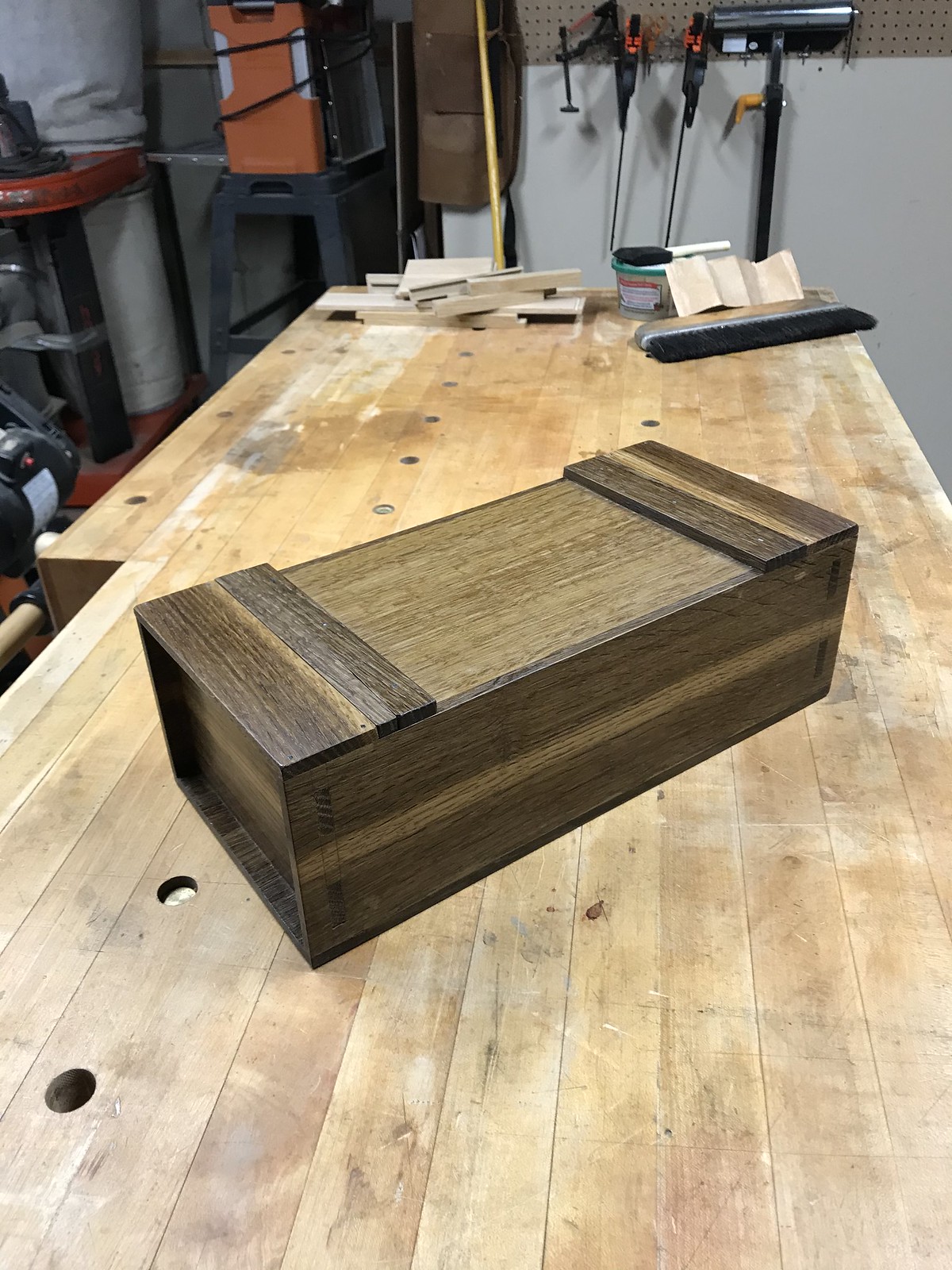I recently posted about a couple of black locust bowls that I turned:
https://sawmillcreek.org/showthread....k-locust-bowls
In the discussion that ensued, the subject of ammonia-fuming wood, and specifically black locust, came up. It sounded intriguing, so I thought I would give it a try. I had found a ten-year-old post on this forum which included this photo of a fumed natural edge bowl, in which the darkening of the heartwood is very dramatic.
B Locust Lg..jpg
I researched the process, and it appears to be simple. Put the item (bowl) to be fumed into a plastic tent along with a bowl of ammonia, and leave it for a period of time; the ammonia evaporates, and the vapor interacts with chemicals in the wood to darken the wood. The variables are mainly (1) what sort of ammonia you use, (2) how long you allow the process to continue, and (3) temperature in the tent.
I used "janitorial strength" ammonia, purchased from an Ace Hardware. This is 10% ammonium hydroxide, in water. Most household ammonia is much lower in strength (about 1%), and lab-grade ammonia is about 30%, but it is dangerous to handle. The 10% stuff isn't good for your skin, but if you get it on you it can be easily neutralized with vinegar and washed with lots of water, so not a big deal.
Screenshot 2021-09-30 11.09.09 AM.jpg
I used a large trash-barrel clear plastic bag as the "tent." Clear to allow you to see what's happening inside, without removing the wood from the tent. I had the top from a plastic bin as the base, and a plastic 'milk-crate' box as the frame, shown below. I put this all inside the 'tent' plastic bag, opened up so I had access to the inside of the frame box.
Screenshot 2021-09-30 11.13.52 AM.jpg
I put an aluminum tray to contain the ammonia (of the kind used for small pot-pies), and placed it in the center of the box. Wood blocks to either side of the tray elevated the bowl to be fumed, so it sat directly above the ammonia tray, inside down. Added about a cup of ammonia to the tray, then folded the 'tent' around everything, to contain the vapors, and left it in the sun on a deck, for 3 days (and nights). It was sunny and warm (75-80 degrees) during the day, cool at night. The inside of the tent was wet with condensed vapors, and the tray was about half full (vs. being nearly full, when I started). So, the enclosure was full of ammonia vapor. Powerful smell, too, when opened up at the end of the 3 days.
This is the bowl, before fuming (photo is inside, under fluorescent light):
Screenshot 2021-09-30 11.19.38 AM.jpg
This is the bowl, after fuming (photo is outside, indirect sunlight):
Screenshot 2021-09-30 11.25.01 AM.jpg
It is definitely darker, but there is a slight greenish cast to it, also.
All in all, a lot of work to end up with a less-pleasing appearance, in my judgment.
I did a lot of internet research, too. One of the academic studies I looked at said that black locust was the wood most responsive to ammonia fuming, although oak, especially white oak, is the most frequently-used species for fumed furniture (like Stickley Mission-style furniture). Yet my black locust wood did not react dramatically to the fuming.
Questions remaining: (1) Is the 10% ammonia adequate? (2) Does it matter that the item being turned was a "turned-green" bowl, still not fully dry?
Robert




 Reply With Quote
Reply With Quote


